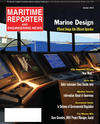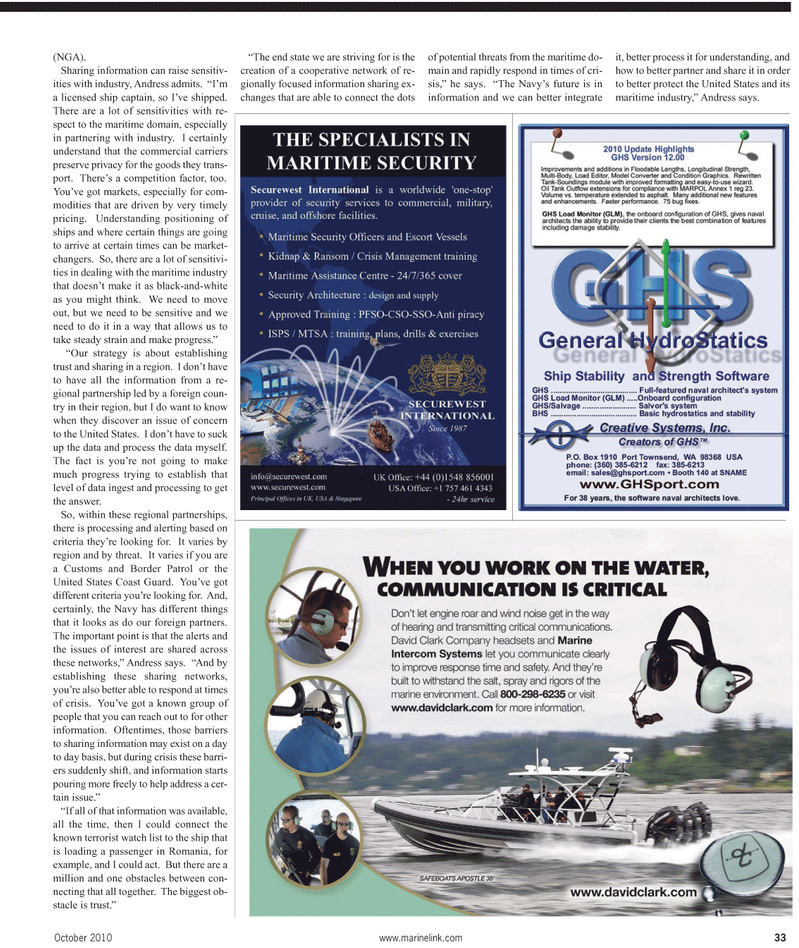
Page 33: of Maritime Reporter Magazine (February 2, 2010)
Read this page in Pdf, Flash or Html5 edition of February 2, 2010 Maritime Reporter Magazine
October 2010 www.marinelink.com 33 (NGA).
Sharing information can raise sensitiv- ities with industry, Andress admits. “I’m a licensed ship captain, so I’ve shipped.
There are a lot of sensitivities with re- spect to the maritime domain, especially in partnering with industry. I certainly understand that the commercial carriers preserve privacy for the goods they trans- port. There’s a competition factor, too.
You’ve got markets, especially for com- modities that are driven by very timely pricing. Understanding positioning of ships and where certain things are going to arrive at certain times can be market- changers. So, there are a lot of sensitivi- ties in dealing with the maritime industry that doesn’t make it as black-and-white as you might think. We need to move out, but we need to be sensitive and we need to do it in a way that allows us to take steady strain and make progress.” “Our strategy is about establishing trust and sharing in a region. I don’t have to have all the information from a re- gional partnership led by a foreign coun- try in their region, but I do want to know when they discover an issue of concern to the United States. I don’t have to suck up the data and process the data myself.
The fact is you’re not going to make much progress trying to establish that level of data ingest and processing to get the answer.
So, within these regional partnerships, there is processing and alerting based on criteria they’re looking for. It varies by region and by threat. It varies if you are a Customs and Border Patrol or the
United States Coast Guard. You’ve got different criteria you’re looking for. And, certainly, the Navy has different things that it looks as do our foreign partners.
The important point is that the alerts and the issues of interest are shared across these networks,” Andress says. “And by establishing these sharing networks, you’re also better able to respond at times of crisis. You’ve got a known group of people that you can reach out to for other information. Oftentimes, those barriers to sharing information may exist on a day to day basis, but during crisis these barri- ers suddenly shift, and information starts pouring more freely to help address a cer- tain issue.” “If all of that information was available, all the time, then I could connect the known terrorist watch list to the ship that is loading a passenger in Romania, for example, and I could act. But there are a million and one obstacles between con- necting that all together. The biggest ob- stacle is trust.” “The end state we are striving for is the creation of a cooperative network of re- gionally focused information sharing ex- changes that are able to connect the dots of potential threats from the maritime do- main and rapidly respond in times of cri- sis,” he says. “The Navy’s future is in information and we can better integrate it, better process it for understanding, and how to better partner and share it in order to better protect the United States and its maritime industry,” Andress says.

 32
32

 34
34
